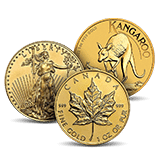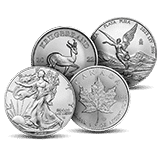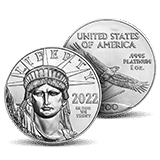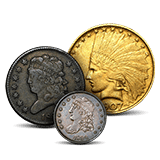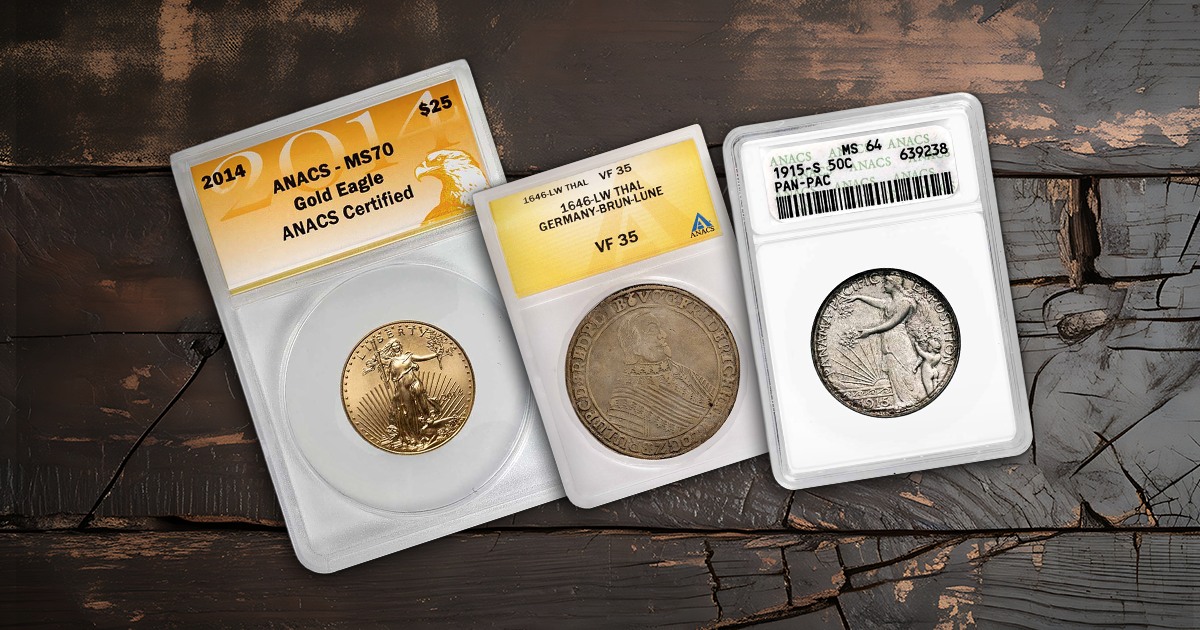
Coin grading anchors modern numismatics. A certified grade from a trusted organization verifies authenticity and condition, giving buyers and sellers a common language for price and risk. Among the major grading bodies like the Professional Coin Grading Service (PCGS), Numismatic Guaranty Company (NGC), Certified Acceptance Corporation (CAC), and American Numismatic Association Certification Service (ANACS), ANACS coin grading stands out for its early start, collector-friendly fees, and deep coin knowledge.
Historical Background and Legacy
- 1972: The American Numismatic Association creates the American Numismatic Association Certification Service.
- 1976: ANACS Headquarters moves to Colorado Springs.
- 1977: The Official ANA Grading Standards are published.
- 1979: ANACS adopts the Sheldon coin grading scale.
ANACS was founded in Washington in 1972 as an American Numismatic Association response to rising numbers of counterfeit and altered coins. The organization’s proximity to the Smithsonian’s National Numismatic Collection allowed early staff to compare suspect pieces against authoritative examples. In 1976, the organization was relocated to Colorado Springs, near the ANA headquarters.
In the following year, 1977, the association released the first Official ANA Grading Standards, which introduced a consistent numismatic vocabulary.
By March 1979, ANACS adopted the Sheldon numeric scale and became the first modern third-party grader. When the ANA sold the service to the publisher of Coin World in 1989, ANACS shifted to private ownership yet retained an educational focus.
Grading Standards and Methodology
ANACS grades on the Sheldon one to seventy scale and applies a four-step workflow:
- Authentication: A senior specialist confirms metal, weight, and surface character.
- Dual Review: Two graders assign independent scores for strike, luster, surface quality, and eye appeal.
- Quality Check: A senior reviewer reconciles differences and approves the label.
- Encapsulation: A sonic sealer locks the coin and labels in a Clearview capsule with a bar code and serial number.
What Does ANACS Grade?
Items accepted for grading by ANACS include:
- United States and world coins, including modern bullion series like Silver American Eagles.
- Civil War and Hard Times tokens
- Medals
- Classic commemoratives
- Exonumia
Service and Turnaround
Service tiers set the turnaround times for coin grading. Economy work averages three weeks, while standard parcels require about sixteen days, and express orders are graded within roughly one week. Unlike many rivals, ANACS accepts cleaned, scratched, and corroded coins. These pieces receive a numeric wear level followed by a note such as “Cleaned” or “Scratch across field.”
| Service Tier | Typical Turnaround |
| Economy | Twenty to thirty days |
| Standard | Fifteen to twenty days |
| Express | Seven to ten days |
Submission Logistics
Collectors fill out a printable form, list each coin with declared value, and place coins two-and-one-half-inch inch flips. Packages travel by insured mail to the ANACS facility. Return shipping charges begin around twenty-nine dollars and rise with weight and value. ANACS supplies packing advice and insurance tables on its website.
Online Tools and Population Reports
The free ANACS certificate lookup confirms grade and variety by serial number. A population report lists every coin the service has graded by date, mint, and numeric score. Collectors use these tools to check slab authenticity and gauge relative rarity before bidding or setting up a price.
Subjectivity and Consistency
Every ANACS coin sees at least two graders plus a quality manager. Although the firm does not publish its training manual, its transparent problem coin labels and half-century record show a culture of internal discipline. A crossover service lets owners submit coins to rival holders; ANACS will only crack a slab if the coin meets or beats the target grade.
Human judgment guides every grade, yet ANACS reduces variance through dual review and final quality control. Decades of transparent labels and reliable problem coin notes reflect a disciplined house practice. A crossover option lets owners request an ANACS evaluation of coins already in rival holders; the original capsule stays intact unless the coin meets or beats the requested grade.
Cost and Accessibility
- Base fee: About $19 per coin for standard United States submissions.
- Promotions: Examples include ten coins for $129 or free variety attribution.
- No membership: anyone may download a form and mail coins in flips.
- International: direct submissions welcome; customer support supplies customs guidance.
Standard grading for a United States coin starts at $14 for modern U.S. coins and $19 for coins not from the U.S. Mint. Bulk rates and frequent promotions can reduce costs. ANACS requires no paid club membership to submit coins for grading and certification.
Holder Design and Security
- Clearview capsule, PVC-free inert plastic
- Sonic seal and tamper evident closure
- Serial number, bar code, micro print, covert anti-counterfeit elements
- Optional high-resolution images for insurance and resale listings
Specialization in Varieties and Attributions
Die variety work remains an ANACS hallmark with expertise in varieties such as:
- Morgan and Peace dollars with precise VAM codes such as VAM 3A
- Lincoln cents varieties of doubled dies and repunched mint marks
- Early United States series with overdates and large versus small letters
Comparison with PCGS and NGC
PCGS and NGC dominate high-profile auctions but charge higher fees, enforce membership rules, and often decline problem coins. ANACS trades some resale premium for broader access, shorter queues, and lower costs while offering solid customer support. It lacks a set registry, and its population report is smaller, yet the service’s promotions and flexible policies attract many private consignors.
Criticisms and Limitations
- A smaller census makes price guides thinner than PCGS and NGC equivalents.
- The absence of a competitive set registry limits bragging rights for collectors building ranking goals.
- Some buyers undervalue ANACS holders, leading to lower auction averages in common grades.
Why Collectors Choose ANACS
- Problem coin acceptance: ANACS authenticates historical pieces that other grading organizations reject.
- Lower cost keeps grading accessible for new hobbyists.
- Variety depth with trusted labels for errors and die quirks.
- Direct access requires no dealer gate, as well as frequent promotions.
- A historic cache of early photo certificates and blue labels carries nostalgia.
Role in the Numismatic Community
ANACS launched third-party grading, taught counterfeit detection through seminars, and still staffs educational booths at major shows. Planned upgrades include digital certificates, AI-assisted image matching, and blockchain provenance records. ANACS may trail PCGS and NGC in resale averages, but it leads in inclusivity, cost control, and variety attribution. For beginners, specialists, and anyone who values education, America’s oldest grader remains a dependable choice that continues to evolve without losing sight of its founding mission.

